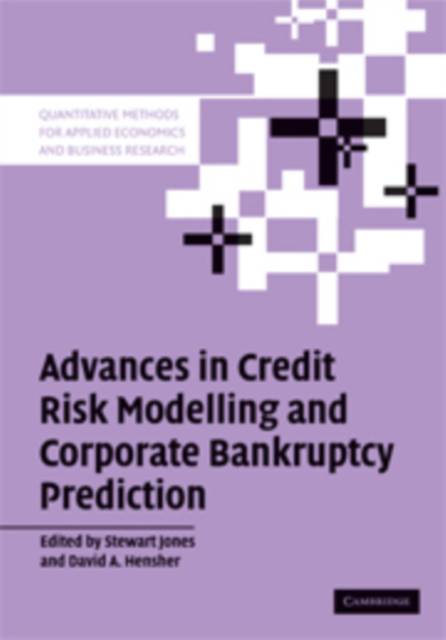
- Afhalen na 1 uur in een winkel met voorraad
- Gratis thuislevering in België vanaf € 30
- Ruim aanbod met 7 miljoen producten
- Afhalen na 1 uur in een winkel met voorraad
- Gratis thuislevering in België vanaf € 30
- Ruim aanbod met 7 miljoen producten
Zoeken
Advances in Credit Risk Modelling and Corporate Bankruptcy Prediction
€ 181,95
+ 363 punten
Omschrijving
The field of credit risk and corporate bankruptcy prediction has gained considerable momentum following the collapse of many large corporations around the world, and more recently through the sub-prime scandal in the United States. This book provides a thorough compendium of the different modelling approaches available in the field, including several new techniques that extend the horizons of future research and practice. Topics covered include probit models (in particular bivariate probit modelling), advanced logistic regression models (in particular mixed logit, nested logit and latent class models), survival analysis models, non-parametric techniques (particularly neural networks and recursive partitioning models), structural models and reduced form (intensity) modelling. Models and techniques are illustrated with empirical examples and are accompanied by a careful explanation of model derivation issues. This practical and empirically-based approach makes the book an ideal resource for all those concerned with credit risk and corporate bankruptcy, including academics, practitioners and regulators.
Specificaties
Betrokkenen
- Uitgeverij:
Inhoud
- Aantal bladzijden:
- 312
- Taal:
- Engels
- Reeks:
Eigenschappen
- Productcode (EAN):
- 9780521869287
- Verschijningsdatum:
- 20/10/2008
- Uitvoering:
- Hardcover
- Formaat:
- Genaaid
- Afmetingen:
- 168 mm x 249 mm
- Gewicht:
- 739 g

Alleen bij Standaard Boekhandel
+ 363 punten op je klantenkaart van Standaard Boekhandel
Beoordelingen
We publiceren alleen reviews die voldoen aan de voorwaarden voor reviews. Bekijk onze voorwaarden voor reviews.










